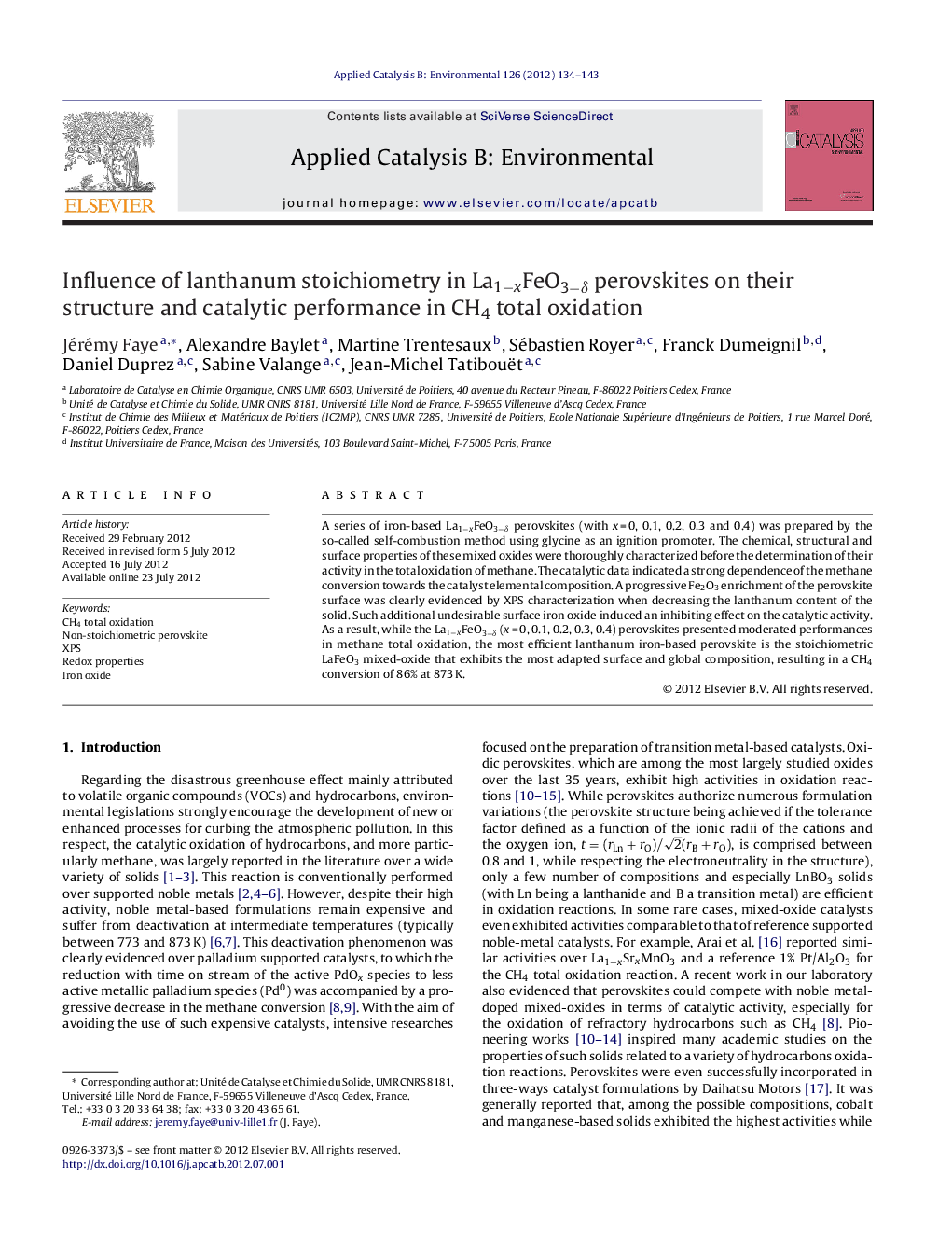| Article ID | Journal | Published Year | Pages | File Type |
|---|---|---|---|---|
| 46537 | Applied Catalysis B: Environmental | 2012 | 10 Pages |
A series of iron-based La1−xFeO3−δ perovskites (with x = 0, 0.1, 0.2, 0.3 and 0.4) was prepared by the so-called self-combustion method using glycine as an ignition promoter. The chemical, structural and surface properties of these mixed oxides were thoroughly characterized before the determination of their activity in the total oxidation of methane. The catalytic data indicated a strong dependence of the methane conversion towards the catalyst elemental composition. A progressive Fe2O3 enrichment of the perovskite surface was clearly evidenced by XPS characterization when decreasing the lanthanum content of the solid. Such additional undesirable surface iron oxide induced an inhibiting effect on the catalytic activity. As a result, while the La1−xFeO3−δ (x = 0, 0.1, 0.2, 0.3, 0.4) perovskites presented moderated performances in methane total oxidation, the most efficient lanthanum iron-based perovskite is the stoichiometric LaFeO3 mixed-oxide that exhibits the most adapted surface and global composition, resulting in a CH4 conversion of 86% at 873 K.
Graphical abstractFigure optionsDownload full-size imageDownload as PowerPoint slideHighlights▸ La1−xFeO3−δ perovskites were prepared by the auto-ignition procedure. ▸ XPS analyses allowed to clearly describe the surface composition evolution. ▸ Enrichment in Fe2O3 on the surface was evidenced when decreasing La content. ▸ The closer the stoichiometry, the more efficient the catalyst in methane oxidation.
